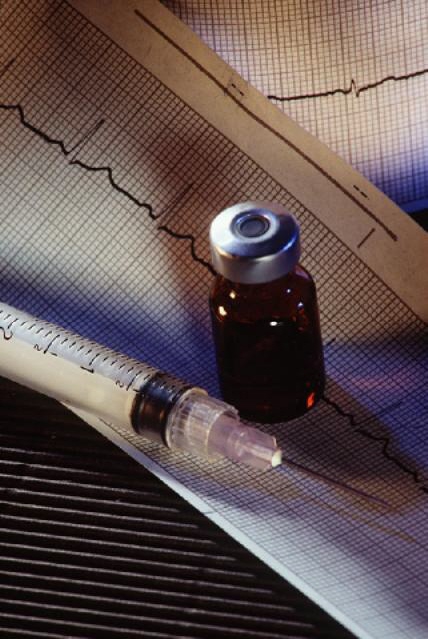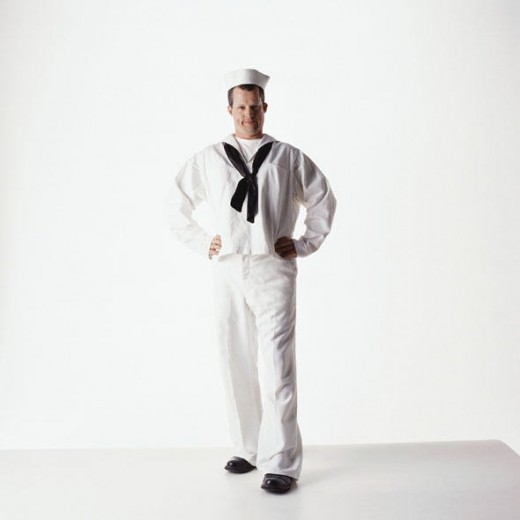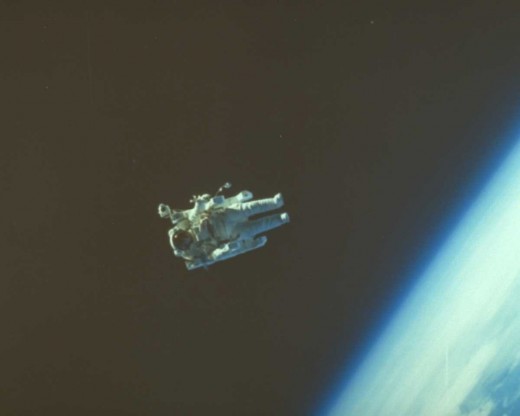Redneck Tale # 5 (Continued) – More Crazies (Will They Ever Stop Coming ?)

Crazies Magnets
There truly must be such a thing as a "crazies magnet," and I think that I have one built into my body – probably somewhere up top in the middle of what the shrinks call gray matter. Observations show that crazies magnets act like the black holes out in space. Once they get to doing their thing, attracting crazies, there seems to be no way to get rid of them.
Back in SampsonVets Tale # 2 there were a series of small discussions about stuff encountered in my illustrious military career wherein I learned the art and science of being a bedpan commando on a psycho ward, how to make foot X-rays the hard way, closing down a department in a big military hospital, and lots of other things, all the while trying to fend off crazies. After that, I tried to again learn how to be a civilian. As you discovered, had you read that tale, it was of little use to try to shake off the crazies. They followed me everywhere.
For this current tale, regression rules. A jump back into the military is in order. Encounters with more crazies during those years came to mind just as soon as SampsonVets Tale # 2 was typed out and posted. As I told you earlier, what was not funny back then makes me smile today. I hope that these crazy things hit you the same way.
Let’s start at the very end of my heroic military career.
Having mostly failed at being a successful bedpan commando, the brass sent me through X-ray school. Not willing to train me within the Air Force system, they foisted me off onto the Army’s X-ray school in Texas. There were enough crazies there to go around, be assured. However, I made it back to my Air Force hospital, a huge, sprawling affair in the upper respiratory disease capitol of the universe, the middle of New York State. There I did my best to overcome an initially crummy start in X-ray imaging, but it was a real battle. During that long and drawn out apprenticeship I learned one thing of importance to me during the rest of my Air Force career and on through the rest of my life. I attract crazies.
The Air Force never did trust me to attend an Air Force training school. When it became time for me to learn the ins and outs of nuclear medical technology, they sent me off to the Navy’s radioisotope school in Maryland. I reported in several hours late, according to the Navy. They have a different method of figuring out when a body is supposed to arrive at a place than does the Air Force. (Ships versus airplanes and calendars versus clocks !) Of course, the crazies had never bothered to alert me to that divergence of opinion. Letting that problem slide, the Navy told me to go on over to Building So-and-So and report in to radioisotope school.

Crazies Aweigh My Boys...
As I walked through a long wooden corridor approaching the school office, a Navy officer walked along the corridor going the other way. He carried a sizeable gadget in his hands which, when he got opposite of me, he lifted it to a horizontal position. Then he pointed the thing right at me and said, "Zap! You’re sterile." Oh, oh. They had followed me to Bethesda, Maryland. Yes they had. Later, I learned that the gadget is called a "Cutie Pie." It is a hand-held radiation meter that works at a distance from a radiation source. "Zap! You’re sterile." A crazy sort of welcome to my new school. (What else should I have expected?)
That guy turned out to be one of the officers who instructed us in our new profession. He was the physics teacher. He was good at teaching physics. He was also crazy, plumb crazy. I learned a lot from him, much of which he had never intended to teach.
The head of the school also provided us with his personal instruction. He was a very concentrated fellow, serious as a boil on one’s tail end. He knew his stuff, too. His stuff was a mystery to those of us in his class. He took advantage of our weakness and tried his doggondest to shove it all into our heads before we could put up a battle.
One day he tried to teach the lot of us how to "derive" the formula for the decay of radioactive isotopes, those little molecules of one substance or another that, sooner or later, explode themselves and become something different from what they were originally. He turned away from the class and began to scribble stuff onto blackboard number one. Then, with a whoop and a holler, he jumped over to blackboard number two, the one to the right of blackboard number one, and continued scribbling gibberish. Jumping a little bit on his right foot, he zoomed in to blackboard number three, and kept on with the obviously crazy assumption that his audience was entirely with him.
A Navy guy named Abbott had been taking all of this in for what it was worth in a most relaxed manner. He had tilted his chair backwards and his feet were no longer on the floor. So, the big boss completely filled up blackboard number three and had then whirled back again to blackboard number one, erasing all that was scribbled on it. Then, with a great smile he triumphantly said, "…and therefore…," Seaman Abbott un-tilted his chair, crashed both feet back onto the floor, and declared in a loud, drawn out, and sincere voice, "Sh-------------t!" Our leader turned bright red and simply said, "If you can’t understand it, memorize it!" Aaaahhh – true leadership is the greatest whenever you need some.
Crazies at the bottom. Crazies at the top. I was getting acclimated to this crazies stuff very nicely. I smiled, congratulated myself, and memorized that bodacious formula.
"I can handle this crazy Navy stuff. I know I can."
As things turned out, the school commander was a reasonably nice guy. He was somewhat on the nervous side, but that was understandable. He was now of the rank of Captain, which, in the Navy, is equivalent to that of a bird colonel in the Army. So he had been around for a good, long time, including during World War II. During those years ships on which he had sailed had been torpedoed out from under him four times. His nickname was "Shaky Jake." There was a certain logic to that nickname.
I used to argue with Shaky Jake over which uniform I chose to wear. In that Navy hospital, the Navy troops wore their white cotton sailor suits while on duty in the wards and laboratories. Those of us Air Force types (I was the only one there at that time) serving with the Navy on hospital duty who did not possess white cotton uniforms. We had blue woolen uniforms. Bethesda, Maryland, had a way of being overly warm during the late winter and early spring months. One day I showed up in the radioisotope lab wearing my summertime khakis. Cool was what I wanted – not beauty. Shaky Jake had a fit. He asked me on what authority I had changed from winter to summer togs. He obviously had the mutual thought that I was crazy.
Understand that I would never be impertinent to a superior officer, much less to one for whom I had a reasonable amount of admiration. So I very patiently explained to Shaky Jake that, in all of my years in the Air Force, it had always been so that an order to seasonally change uniforms came out under the signature of the base adjutant. Base adjutants were officers second in command to the base commanders. So I explained to Shaky Jake that I was the ranking Air Force guy on this Navy base and was, therefore, at least equivalent to a base adjutant (as far as the Air Force was concerned). His response was to ask, "You don’t want to catch pneumonia, do you?" I was shocked enough by such a response that I agreed to go back to wearing those abominably hot woolen blues. It was mind boggling to deal with so kindly, but crazy a superior – one with birds on his shoulders, stripes up and down his jacket sleeves and chicken stuff on the visor of his dress cap.
Well, the springtime heat inside of the hospital finally got to me. I had to do something for relief, Shaky Jake’s solicitousness or not. Down the road to the Army’s Walter Reed Hospital I went, there to borrow two sets of white cook and baker uniforms that I could wear in the radioisotope laboratory. That is, two sets every week. Wear ‘em. Bring ‘em back for cleaning. Exchange ‘em for two more sets. This was perfect.
Shaky Jake caught me wearing those whites the first day I wore them. He asked, "What in the world are you wearing NOW?" What else could I tell him other than, "These are what the Air Force folks wear in our hospitals."
I could not believe it when he told me, "We will see about this! I am going upstairs to ask the Admiral about it." My eyeballs probably rolled with that. The man could have simply told me, "Take those foolish things off and get back into your blue uniform!" But he didn’t do that. When he returned from his chat with the Admiral, he let me know that the Admiral said it was OK to wear those whites, but that I could do so only within the radioisotope laboratory. The next time I was caught wearing the whites was in the mess hall. I was getting the hang of dealing with crazies. Actually, it was becoming a bit of fun.
Speaking of the Navy hospital’s mess hall (or galley as they referred to it), that was a place heavily populated with crazies. The food was acceptable, but dangerous. There were lots of metal shards and the like in with your food. They came from opening cans of food in a hurry I suppose. You had to pick them out of your beans or suffer the consequences. My conclusion was that crazy food and crazy people are logically inseparable.
Another thing about the mess hall was the application therein of what I regarded to be a somewhat crazy Navy tradition. The serving lines were long. Chief Petty Officers, sort of like sea-going master sergeants, had the right to break into the serving line anytime they felt like doing so. That was something of which I was unaware. One lunchtime I was turned about in the line and was having a great conversation about baseball with one of my classmates. We finished talking, and I turned around rather too fast and my elbow hit a Chief Petty Officer right in his midsection. He yelled at me nicely enough, and when I asked him, "Where in hell did you come from? You weren’t there two minutes ago," he put forth a lecture on Chief Petty Officer protocols that would serve the Navy well to have it put into hard-bound book form. If anyone thinks that I was dumbfounded by such attention, forget it. I just smiled, told the nut thanks, and vowed to myself to keep my eye open for him in the future.
The future arrived the next day. This time I spotted him. I absolutely knew that he would head for the line right where I was standing. Being the student of science and of crazies that I had become, I was as accurate as a honey bee homing in on its beehive from a field of nectar-filled flowers 10 miles away. Talk about having a dedicated crazy figured out. So I turned around to engage in another conversation with a classmate. When I sensed that the knucklehead CPO had made it in front of me in the chow line, I turned about in a stumbling sort of way, thereby managing to step really hard onto one of his feet.
"Oh my word! It’s you again, Chief. I cannot believe it. You know how careless I am when I turn around… "
"Who is YOUR chief?" he roared.
I told him that my chief was Chief Konwinski.
By the time I got back to the lab from lunch, the guy had already complained to my chief.
Konwinski called me to his office. He was smiling nicely, so any fear that I had had went away. Konwinski suggested that I stop picking on other Chief Petty Officers.
"Gus, just leave them alone. Poking CPOs in the belly and stomping on their toes will not win any points for you. Try to understand, Gus – CPOs have a lot on their minds and most of them are reasonably delicate. Oh yes, your chow line buddy, Breen, and I are going into Bethesda this evening for some beer. Want to come along?" Chief Konwinski was definitely not crazy, just the rest of them, right?
Being of low rank and with a pay status that would make homeless folks appear wealthy, my little family did not reside with me in the fiercely expensive Washington, D.C., area. They stayed in Syracuse, New York, some 400-plus miles away. Unless I had extra duty of a weekend, I’d drive to Syracuse. The Chief Petty Officer who ran the school’s office picked up on my weekend jaunts. She told me that I was fixing to get into some real trouble over those long drives because the Navy did not allow its enlisted troops to travel more than 75 miles from the base without having an official pass. I had not bothered about asking for such a pass because, in the Air Force, non-coms like me could travel anywhere within the United States using only their identification cards, just as long as we returned back to duty on time. She insisted that I ask for a pass.
As she explained it, should I have an accident along the way, the Navy would court martial me for being without an official pass. I explained to her that I would have to be crazy to go through all of that bother. After all, if I wound up injured in a hospital somewhere, the hospital would contact the Air Force, not the Navy, and the Air Force knew that it was OK for me to be anywhere in the country as long as I was not supposed to be on duty at the time.
She insisted.
I decided that asking for a pass was a lot easier than trying to argue with her. I went upstairs in the hospital to the exec’s office and asked for one. The Navy officer looked at me sternly. He asked, "Don’t you know that the weather report calls for rain? Syracuse is way too far to drive. No, you may not have a pass."
Next, I decided that from what I had seen and heard thus far at this famous Navy medical center, the entire U.S. Navy had a requirement that few non-crazies were permitted to join up. Further, the Navy screened the fleet and sent only the wackiest ones right here to Bethesda.
Then I jumped into my already packed automobile and away I went on my weekend run to Syracuse.

Air Force, Astronauts, and Alligators
Crazy they all may have been, but they drummed radioisotope tech stuff into me to such a degree that I was sent to the Air Force’s school of Aerospace Medicine to run the Clinical Science’s Division nuclear medical laboratory. It was a dream assignment, as the saying goes. There were moments, however.
My first day there included having to deal with my immediate boss, a medical doctor whose specialty was internal medicine. He had gone through the Navy’s radioisotope course, too, and we both hit the aerospace medicine place at the same time.
I came into my new lab. There sat Larry, my boss doctor, perched up on a high stool, picking up little white specks from a glass container with some tweezers and transferring them, one at a time, into little glass test tubes. I asked him what he was doing. He told me that this was part of a test procedure he was designing. The test was to determine things about blood serum transport of dietary fat. This, I could see, was going to be a very interesting assignment for me.
Doc Larry then declared that the amount of those little white specs had to be the same from one test tube to the next. Accuracy was of the greatest importance!
"And, Doc, what are those little white specks?"
"Granules of Tide soap," Doc Larry explained, "and the same amount must be in each tube."
I promise you that I did not fall to the floor laughing. I didn’t. Very patiently I told Doc Larry that he should get rid of those tweezers, dissolve an appropriate amount of Tide soap in distilled water, measure the same amount of soap solution into each test tube, evaporate the water, and he’d have exactly the same amount of Tide soap in each tube. You see, each speck of his Tide soap was of a different size. "Oh well," thought I, "I have never been able to escape these crazies, and I doubt that will change anytime soon. Let’s just make the best of things at this nice new laboratory."
"Doc, I’ll tell you what let’s do. You stick to stuff in your office. I’ll stick to stuff in here. Whenever you want something done in here, you just tell me what you want and it will be done."
Doc Larry and I got along great thereafter. We’d fly the aircraft owned by the base flying club on weekends. Doc Larry had been a Navy fighter pilot, crazy as they are known to be, but a fine pilot. His flying was downright scary at times, but somehow we always managed to miss the far fence on the little grass runway, even after some too-hot landings when Doc Larry thought there was a bug in the pitot tube such that he couldn’t tell what his airspeed might be. I kept telling him that old adage – "There are bold pilots and there are old pilots. There are no old, bold pilots." He felt that bold and crazy did not mean the same thing. Maybe Doc Larry was correct.
One of the tasks set before us at the School of Aerospace Medicine was to perform two-week-long physical examinations on all but the first seven of the astronaut candidates. They came from all branches of the military, and some were from civilian agencies as well. You would not believe what their physical exams entailed. Brutal might be a single word that would suffice to describe those physicals.
This was the selection part of what was known as "Project Apollo," the man on the moon deal that President Kennedy had promised the world that the United States would complete before the end of the decade. Can't you just imagine how puffed up we all were just to be a part of so monumentally historical a project? Don't bother imagining anything. We were!
Of the several hundred astronaut candidates, each wanted to be selected, but there were to be only a few who would make it into the astronaut corps. One of the big factors in deciding which ones would stay, at least as far as physical health was concerned, was the proportion of body fat to their total weight. Another way to express that would be to say that their lean body mass (water, blood, muscle, bone, etc.) had to be no less than 70 per cent of their total weight.
One of the candidates, a medical doctor, went over the top by just a little bit as to the amount of fat he was carrying around. They told him that was it for him. He told them to wait just a little bit. He would fix the problem. He put on some running shorts and sneakers. Then he ran and he ran and he ran. It was scorching hot outside and he sweat like crazy and so lost a goodly number of pounds. Then he came back in and asked for another body fat test. Now then, that guy was a medical doctor and, surely, he should have realized what he had done to himself. Instead of burning body fat to any degree, he had just thrown out enough water to cause his lean body mass to shrink. The fat stayed right about the same. His new test looked worse than the previous one. Dedicated ambition and strong desire can provide an entrée into some crazy thinking, or the lack of any thinking for that matter.
Another time, I was seated at my bench in the laboratory. In through the door raced one of the astronaut candidates. He was probably the smallest one of them all – short, skinny, and, you guessed it, crazy looking. He zipped on by me and jumped up onto the top of the big chest freezer we used for the test samples for our liquid scintillation counter gadget. He leaned over and looked behind the freezer.
"What are you doing?" I yelled.
He replied, "I think that was the only place in this building that I did not already see."
I ask you, "Is space exploration restricted to sane folks or can crazies also apply?"
I had meant to earlier describe the visit that Doc Larry and I paid to the laboratory of a famous nuclear medical physician and researcher who hung out at the National Institutes of Health located right across from the Navy school where Doc Larry and I had once studied. Part of our work at the Air Force’s School of Aerospace Medicine involved a test procedure known as the "total body water" test. It uses radioactive tritium in a fairly complicated way to learn of a person’s total water content. In turn, that analysis is used to determine how much lean body mass a person possesses, hence how much body fat is also hanging around. Anyway, we hitch-hiked our way on several Air Force planes to see that researcher – his name as I recollect was Dr. Berlin – and to scope out Dr. Berlin’s total body water testing laboratory. We walked into his lab. His test subjects were all over the floor, one room to the next. They were in big glass tanks – not bad settings for water-type testing, right?
The subjects were all alligators.
No matter where I go, crazies either are already there or they follow after me.
Maybe next time I may relate some of my experiences in dealing with President Lyndon B. Johnson, with one of my helpers at the lab, and with a toady little Air Force sergeant I met up with again after leaving the service.
Crazies. The lot of them.
You can download lots of free books at www.sampsonafb.com








